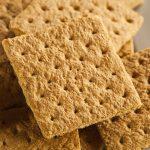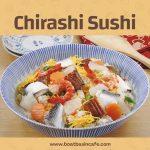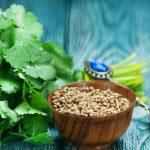Get instant tablespoon to cup conversions + expert baking tips to ensure your recipes turn out perfectly! You’re not alone in wondering how many tablespoons are in a cup.
Understanding these conversions is critical for baking success, as baking relies on precise ratios of ingredients.
In this ultimate guide, you’ll find:
🧮 Free tablespoon to cup calculator
📏 Cheat sheet (tablespoons, teaspoons, ounces, grams)
🍯 Tips for measuring tricky ingredients
👩🍳 Techniques for precision + common FAQs
🍰 Bonus recipe to practice your skills

🧮 Calculator
Cheat sheet (tablespoons, teaspoons, ounces, grams)
| Measurement | Tablespoons (tbsp) | Teaspoons (tsp) | Ounces (oz) | Grams (g) |
|---|---|---|---|---|
| 1 Cup (US) | 16 | 48 | 8 | Approx. 237g |
| 3/4 Cup (US) | 12 | 36 | 6 | Approx. 177g |
| 1/2 Cup (US) | 8 | 24 | 4 | Approx. 118g |
| 1/4 Cup (US) | 4 | 12 | 2 | Approx. 59g |
| 1 Cup (metric) | 16.7 | 50.1 | 8.45 | 250g |
So, how many tablespoons in a cup? In a US cup, there are 16 tablespoons. In a metric cup, there are 16.7 tablespoons.
🍞 My Baking Disaster…And What It Taught Me

I’ll never forget my first major cooking failure back in middle school – cinder block brownies thanks to a measuring mishap!
I carefully prepared the butter, sugar, cocoa, and eggs. But when it came time to add the flour, I accidentally used cups instead of ounces.
Into the oven they went, bubbling up with a crispy top that had me so excited. But when I eagerly took a bite, I discovered dense chocolate bricks! What went wrong? Those sneaky air pockets in the flour had struck again, foiling my perfect brownie dreams.
Yet that experience imparted a vital baking lesson I carry with me today – respect the power of density! Little did I know then how much that lesson would serve me in my baking journey ahead. Now I smile fondly remembering those salty sweet bricks and my early measuring woes. Stay calm and measure on, fellow bakers. Persistence is delicious.
Standardized Measurements, Thanks to Fannie Farmer

Today we take standardized measuring for granted. But back in the early 1900s, iconic cookbook author Fannie Farmer pioneered the precise techniques that remain essential a century later:
Correct method to level dry ingredients 1 tablespoon = 3 teaspoons 16 tablespoons = 1 cup
Farmer understood the science behind consistent results. Her focus on weighing, sifting, and leveling transformed how we bake.
Even now, her wisdom guides us in achieving dreamy pastries and cloud-like cakes. Learn more about the fascinating history of kitchen measurements.
📏 Key Milestones in U.S. Measuring History
| Year | Event |
|---|---|
| 1896 | Fannie Farmer publishes The Boston Cooking-School Cook Book |
| 1916 | Pyrex introduces glass measuring cups |
| 1970s | Plastic measuring tools rise in popularity |
⚖️ Density: The Secret Ingredient Affecting Your Conversions

Flour and sugar may look the same in a measuring cup…but their density tells another story!
Airy flour yields about 5 ounces per cup, while granulated sugar clocks in at a hefty 7 ounces. That’s a 40% difference!
👉 Common Ingredient Densities
| Ingredient | Weight & Volume |
|---|---|
| All-purpose flour | 1 cup = 4.5 oz, 1 tbsp = 0.5 oz |
| Granulated sugar | 1 cup = 7.1 oz, 1 tbsp = 0.8 oz |
| Brown sugar | 1 cup = 7.8 oz, 1 tbsp = 0.9 oz |
| Powdered sugar | 1 cup = 4.2 oz, 1 tbsp = 0.5 oz |
The takeaway? Whenever possible, weigh ingredients for reliable results. When using cups, adjust your expectations (and your recipe) based on each item’s unique density.
💧The Trick to Measuring Liquids
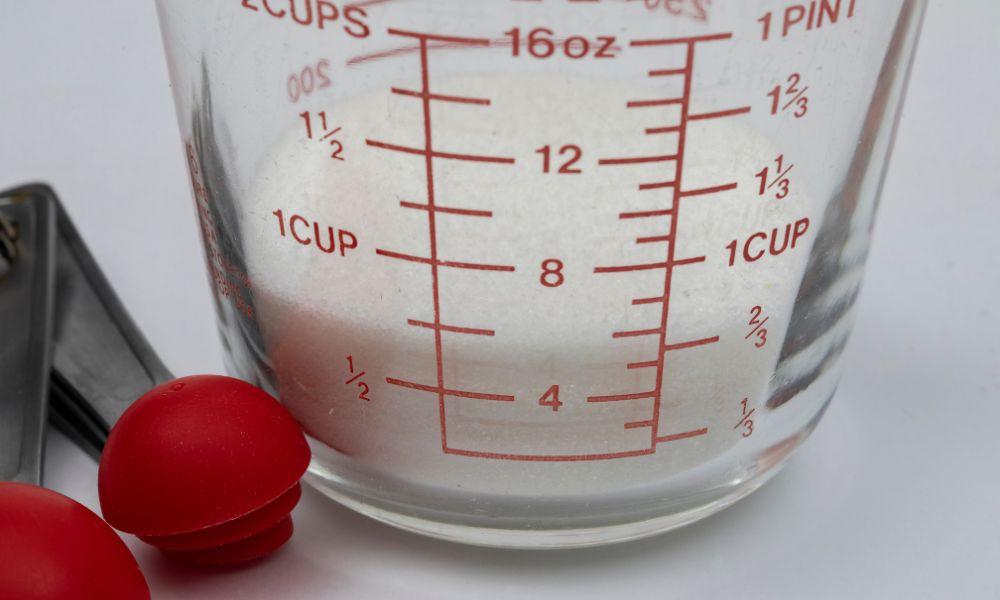
Ah, the deceptive world of liquid ingredients! Viscosity (aka thickness) creates air bubbles that distort volume. Case in point – 1 cup of syrup yields 25% less than 1 cup of pure H2O.
💁🏻♂️ My advice? Give honey a warm water bath for a smoother pour. Let cooking oils settle completely before reading amounts. And always stir syrups gently to release those pesky air pockets.
| Liquid | Equivalent in Cups of Water |
|---|---|
| 1 cup honey | 0.67 cups |
| 1 cup maple syrup | 0.75 cups |
| 1 cup oil | 0.85 cups |
👩🍳 Mastering Measurement: Tips from a Pro
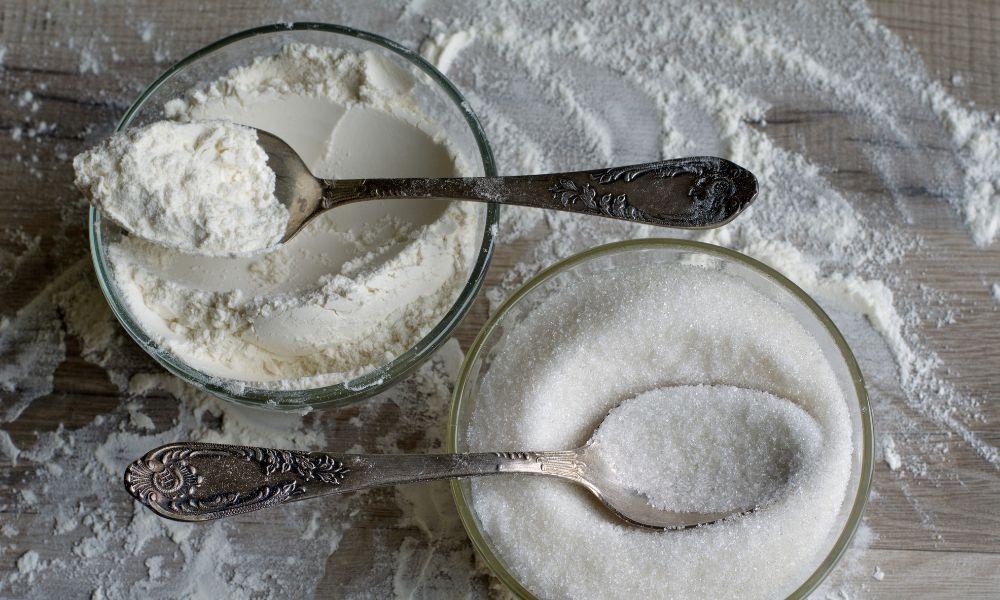
After decades in professional and home kitchens, I’ve discovered the secrets to measuring success:
Here’s a comparison:
| Technique | Description |
|---|---|
| Spoon and level dry goods | No scooping allowed |
| Sift clumpy powders | Sift before filling cups |
| Weigh ingredients when baking | Bonus points for using grams |
🛠️ Testing Your Tools: The DIY Way
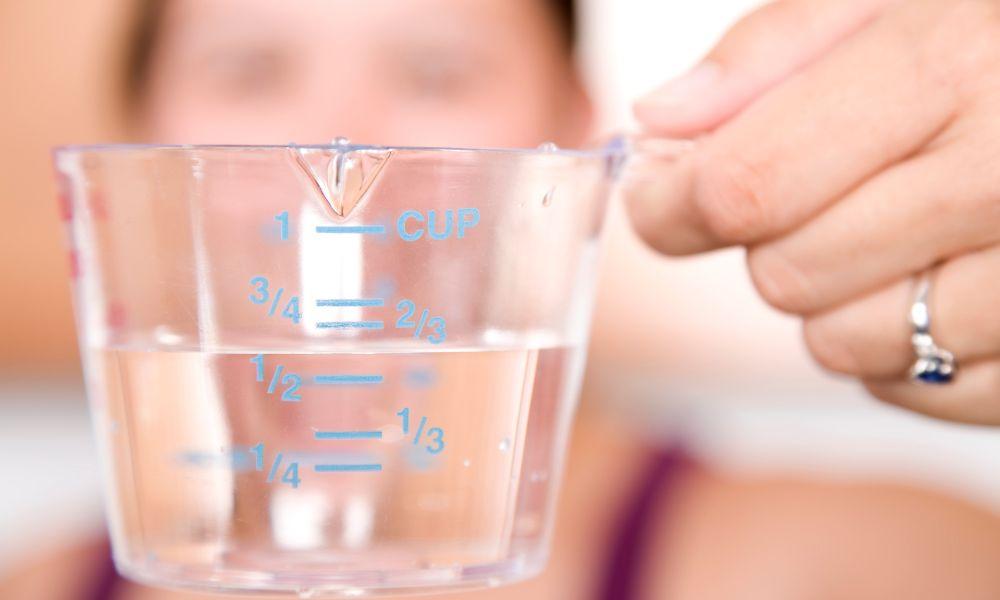
When was the last time you verified your measuring tools’ accuracy? Over time, warping or dents can throw off your amounts. But calibrating cups and spoons at home is surprisingly simple!
How to Water Test Your Tools:
- Fill the tool with pre-measured water
- Pour into a verified liquid measuring cup
- Note any discrepancies
- Adjust your recipes accordingly (or buy a fresh, accurate set)
Sure, professional calibration exists for the truly committed. But for most home chefs, a simple water test does the trick. Verify your vital baking tools frequently for frustration-free cooking!
🌍 Conversions for Cooks Around the Globe
U.S. recipes rely on standard 240 ml cups, while Australian and British recipes utilize 250 ml metric cups. And for nutritional labeling purposes, the U.S. also has a “legal” 240 ml cup.
No matter where your culinary adventures take you, this calculator has you covered. Convert cups (US & metric) to tablespoons, grams to teaspoons, and everything in between with just a few clicks.
FAQs
Can you substitute regular spoons for measuring spoons?
While a normal spoon will do in a pinch, it won’t deliver the precision needed for baked goods. Always use dedicated measuring tools for best results (cooking is more forgiving).
When should you use a scale vs. cups?
Glad you asked! Scales guarantee grams of accuracy, especially for finicky baking recipes. Cups are quick and easy, better for casual cooking. Aim to weigh when precision is paramount.
How do you convert tablespoons to grams?
The answer changes based on ingredient density. Water is universal – 1 tablespoon is about 15 grams. But a tablespoon of flour? Just 8 grams.
Should you pack brown sugar into measuring cups?
Yes! Packing ensures the molasses-infused sugar crystals nestle closely, creating a dense cup. Scooped or loose brown sugar introduces too much air, throwing off your amount. My tip? Pack it in, then level off for perfect proportions.
What is the Difference Between Tablespoons and Cups?
Tablespoons measure both liquid and dry ingredients and are smaller than cups. Cups mostly measure liquid ingredients and are larger.
How Many Tablespoons Are in a Cup of Butter?
A cup of butter changes to 16 tablespoons.
Why is it Important to Double-Check Your Math When Converting Recipes?
Checking your math twice helps prevent mistakes, leading to wrong measurements and a ruined recipe.
How Many Tablespoons Are in a Cup of Brown Sugar?
A cup of brown sugar changes to 16 tablespoons.
How Many Tablespoons Are in a Quarter Cup?
A quarter cup becomes 4 tablespoons.
How Many Tablespoons Are in a Half Cup?
A half-cup converts to 8 tablespoons.
Bonus: Practice Your New Skills with this Recipe!
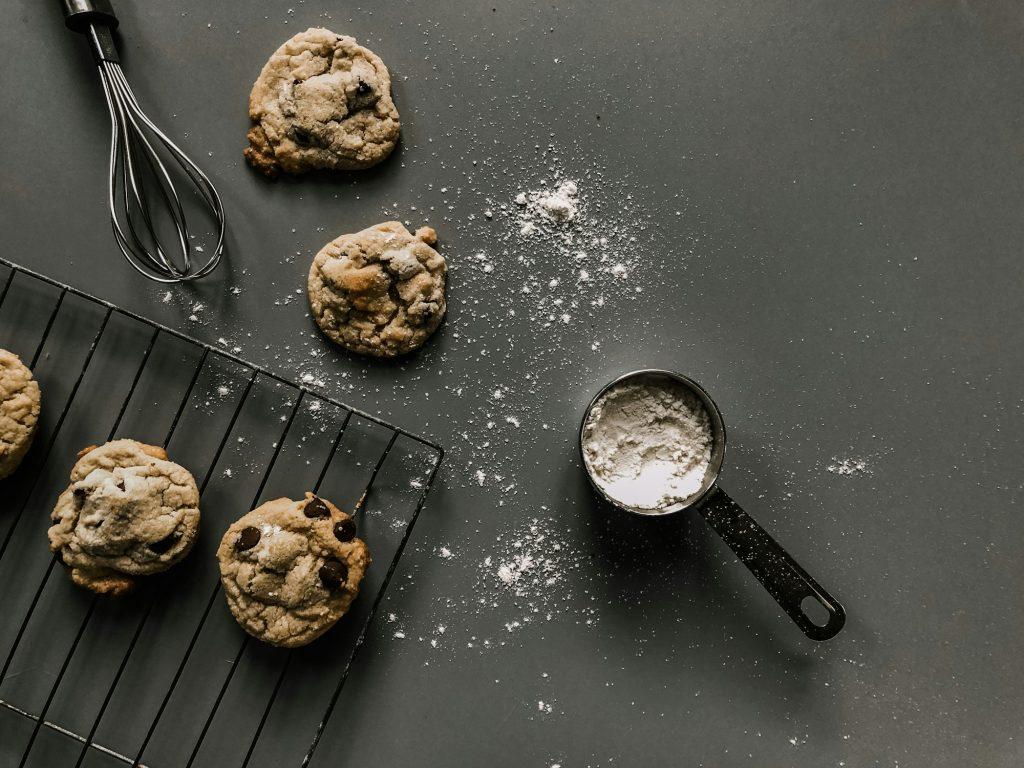
Now that you’re a tablespoon pro, let’s put that knowledge to the test! These classic chocolate chip cookies are the ideal way to hone your measuring expertise.
You’ll practice key techniques like sifting flour, spooning and leveling dry ingredients, and packing brown sugar.
💁🏻♂️ Perfect Chocolate Chip Cookies Makes 24 cookies
Ingredients:
- 2 1⁄4 cups all-purpose flour (270 grams)
- 1 tsp baking soda
- 1 tsp salt
- 1 cup unsalted butter, softened (227 grams)
- 3⁄4 cup granulated sugar (150 grams)
- 3⁄4 cup packed brown sugar (165 grams)
- 1 tsp vanilla extract
- 2 large eggs
- 2 cups semisweet chocolate chips (340 grams)
Instructions:
- Preheat oven to 375°F. Line baking sheets with parchment paper.
- In a medium bowl, sift together flour, baking soda and salt. Set aside.
- In a large bowl or stand mixer, beat butter and both sugars until light and fluffy, about 2 minutes.
- Beat in vanilla and eggs until combined.
- Gradually stir flour mixture into butter mixture. Mix in chocolate chips by hand.
- Drop rounded tablespoons of dough onto lined baking sheets.
- Bake until edges are golden brown, 10 to 12 minutes. Cool on wire racks.
In the end, baking is both art and science. Precise measurements preserve the delicate chemistry of ingredients. But the artistry?
That’s all you! So have fun, get creative, and enjoy the delicious fruits of your labor. Happy measuring!

